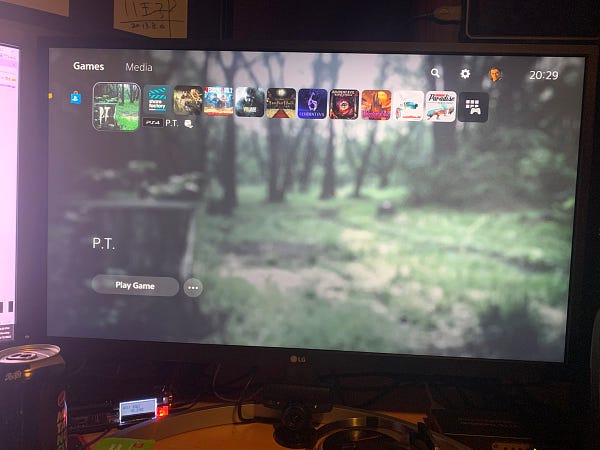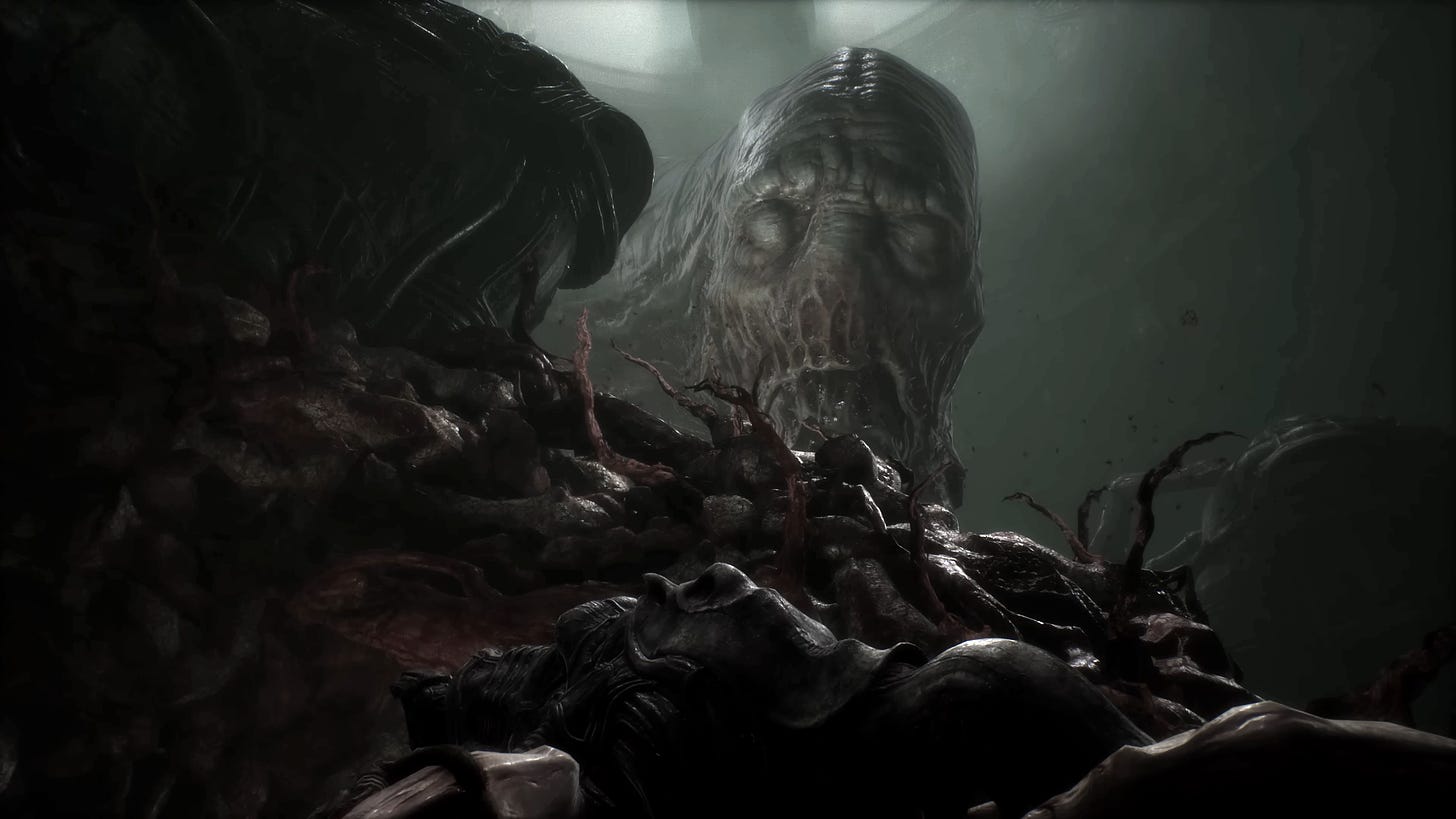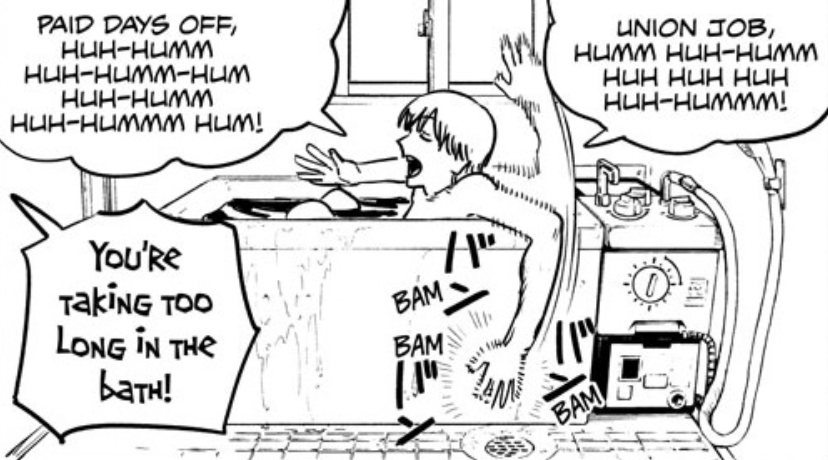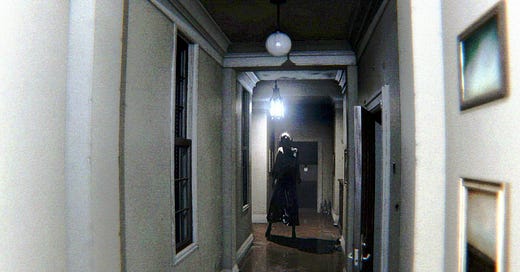wow, week two of ian’s video game cavalcade. i’m a little surprised it got this far! if you missed last week’s installment, be sure to go back and check it out.
that said, thanks for sticking around. truly. we have some good stuff to talk about today, including a new p.t. development, a review of scorn, and a story that’s not even about video games (gasp). tell all your friends.
Absolute Genius Gets P.T. Working On Retail PS5
prolific hacker lance mcdonald—he’s the guy who unlocked bloodborne’s framerate, for those out of the loop—recently shared how he finally got p.t. running on an unmodified playstation 5 (h/t ars technica).
the much-lauded “playable teaser” for hideo kojima’s canceled silent hills project, p.t. is considered one of the holy grails of modern horror gaming thanks in part to konami pulling the demo from playstation network in 2015 and rendering it unplayable.


earlier this week, mcdonald walked his stream viewers through the steps he took to achieve this monumental feat. first, some pre-requisites: you need to have a playstation 5 that was jailbroken before the release of firmware version 4.5, a copy of p.t. obtained either legally or extra-legally, and a playstation network account that accessed p.t. during its original lifespan on the playstation 4.
mcdonald used an ftp client to access the jailbroken playstation 5 via pc and basically tell the little gremlins under the hood that handle such things that he was allowed to run p.t. on the modern system. from there, he backed up the jailbroken playstation 5’s data to a usb drive and restored it on the unmodified console, which also transferred the list of accepted apps and let him play p.t. on the playstation 5’s current firmware.
it’s certainly a complicated process for what essentially amounts to checking a box behind the scenes, but if you happen to be in the same boat as mcdonald, you should try this out for yourself and impress your friends. god knows p.t. isn’t coming back officially any time soon, even if konami finally remembered silent hill exists in its ip catalog.
Scorn Review: Stiff Muscle
every machine in scorn presented me with some sort of living cavity through which to interact. sometimes it was a puckered anus. sometimes it was a comically gaping vagina. sometimes it was both. sometimes biology and machinery were so intertwined that, for a second, i felt silly to have ever conflated the former with the latter in the first place. but at one point, my character gently caressed a contraption before roughly jamming every finger into separate holes in the instrument’s slimy carapace and my visions of chitinous genitalia came rushing back so fast it made me motion sick.
scorn, released october 14 for xbox series x/s and pc by serbian studio ebb software after 8 years in development, is the latest attempt to translate the largely static works of h. r. giger and zdzisław beksiński into an interactive medium. and while, truth be told, there’s more than a little of author harlan ellison to be found in scorn as well—it contains several in-your-face references to his most famous work, the short story i have no mouth, and i must scream—the game’s lofty ambitions attach firmly to the marketable legacies of visual artists known for the nightmares they released upon the world.
but for me, scorn is inextricably tied to a giger creation more tangible than his iconic paintings: the alien franchise’s xenomorph, or rather, its brutal method of reproduction. after becoming acquainted with giger’s work on another project (maybe you’ve heard of it), writer dan o’bannon eventually collaborated with giger to create the alien’s titular creature, based on an oil slick-skinned monstrosity depicted in giger’s 1977 compendium necronomicon. while scripting alien, however, o’bannon and co-writer ron shusett hit a small roadblock.
“dan said, ‘i know what has to happen next is the creature has to get on the ship in an interesting way,’” shusett explained during an interview for the documentary alien evolution. “in the middle of the night, i woke up and i said, ‘dan, i think i have an idea: the alien screws one of them [...] it jumps on his face and plants its seed in ‘em.’”
“soon as i heard it, i thought, ‘oh well, that’s it,’” o’bannon added in the same documentary. “that was one of the ideas that made it possible to make this thing worth doing at all. this is a movie about alien interspecies rape. that’s it. that’s scary because it hits all of our buttons, all of our unresolved feelings about sexuality.”
much like alien, violation is at the heart of the scorn experience. its entire foundation is built, if not on literal rape, then on the idea of imposing one’s will through gruesome, invasive methods. as i traversed the ruined corridors of the game’s abandoned structures, i quickly realized the only lasting impact i was making on the world around me (and vice versa) was one of degradation. scorn so revels in rapacious cruelty that, at only five or six hours long, it often feels as though it’s squeezing as much torture and inhumanity as it can into every minute.
much hay has been made about the absurdity of a game as aesthetically foreboding as scorn opening with a slide puzzle, but i think the direct consequences of this out-of-place riddle perfectly sets the stage for what’s to come.

after freeing a glowing egg from the slide puzzle, it became my task to navigate its malformed, semi-humanoid occupant through a series of contraptions that slowly and painfully remove it from the gelatinous shell. all the while, it slammed against its confines, eyes rolling erratically in their sockets as hands reached out to me for mercy. its mouth was sealed by a membrane, but it still managed to muster a guttural scream in its throat. i was given two equally horrific choices: destroy my captive and use an intact arm left among the viscera to open a nearby door or force it to cooperate with me on its crooked, shambling legs and, once the way forward was clear, leave it struggling to escape from the clutches of the machinery i couldn’t operate on my own.
scorn is full to bursting with such moments. some hours later, i was tasked with crushing sharp-toothed, fetal monsters in a hydraulic press to fill a key with blood. one was still alive and, even in its weakness, managed to look me in the eye before being turned to goo. an entire chapter revolved around removing a gigantic, moaning hive creature from its symbiotic perch atop a vital elevator by using phallic constructs scattered around the environment to open gaping passageways to new areas in its skin. step by step, the sad-eyed flesh golem peered at me through windows both man-made and organic, unable to do anything but watch as i penetrated and, eventually, murdered it in an explosion of muscle, fat, and entrails.
i’d be remiss, of course, to dismiss the utmost sincerity with which scorn assaults players. it’s not quite sure what it wants to be, mixing elements of survival horror, point-and-click adventures, and walking simulators into a slurry that’s more elevated tech demo than full-fledged video game, but there’s an undeniable glimmer of self-assuredness amidst the confusion. for all its name-dropping PR fluff, scorn really does look like the giger-beksiński collaboration we never got while the two men were alive. and much like giger encouraged viewers to find the beauty in his nightmares, ebb software absolutely managed to make something that’s as compelling visually as it is horrifying to pilot.
during the filming of the documentary never-ending man, famed japanese director hayao miyazaki was shown a presentation on artificial intelligence and animation that resulted in a human body that dragged itself along the ground with its head.
“it doesn't feel any pain, and has no concept of protecting its head,” a researcher explained as the 3D model struggled on a screen beside him. “it uses its head like a leg. an artificial intelligence could present us grotesque movements which we humans can't imagine.”
miyazaki wasn’t impressed. in a now-famous moment of biting criticism, the visionary filmmaker behind castle in the sky, princess mononoke, and spirited away called the project “an insult to life itself.”
“every morning, i see my friend who has a disability,” miyazaki said. “it's so hard for him just to do a high five, his arm with stiff muscle reaching out to my hand. now, thinking of him, i can't watch this stuff and find it interesting. whoever creates this stuff has no idea what pain is whatsoever. i am utterly disgusted. if you really want to make creepy stuff, you can go ahead and do it. i would never wish to incorporate this technology into my work at all.”
i didn’t truly understand miyazaki’s revulsion in that moment until scorn. it deserves to exist, but even as a fan of both giger and beksinski, it’s not something i encourage anyone to experience.
Chainsaw Man Anime Removes Manga’s Pro-Union Dialogue
the chainsaw man anime adaption debuted last week to great acclaim from the franchise’s voracious fanbase. and while the first two episodes have beautifully recreated the bloody fun of creator tatsuki fujimoto’s irreverent manga, eagle-eyed viewers also pointed out a significant change to the dialogue that may have a real-world impetus.
chainsaw man follows the titular alter ego of protagonist denji, a good-natured vagrant who finds himself employed by the local authorities after fusing with pochita, a dog-slash-chainsaw demon. rather than put him down on the spot, a mysterious government woman named makima exploits denji’s circumstances by promising him everything a young man needs: room, board, and a little pet play.
the catch? denji is forced to hunt demons in perpetuity using his newfound ability to transform into a chainsaw-faced hybrid. as someone who was already risking his life to pay off a sizable debt, however, our hero couldn’t care less. and why would he? instead of barely surviving as a street urchin, denji now gets to live in a real deal apartment, eating toast slathered in jam and bathing on the reg.
chainsaw man episode two, titled “arrival in tokyo,” gave us a first-hand look at denji’s transition from life on the streets to living with his new partner, chain-smoking pretty boy aki hayakawa. of course, rough-around-the-edges denji isn’t the best roommate, but at least his bathtub song celebrating his union job with paid days off from the manga is reduced to simple nonsense words in the anime.
oh wait, no, that’s a bad thing. here’s what this same moment looks like in the source material:

changes happen all the time when manga gets turned into anime, but this came off as a pretty bad look in context. see, chainsaw man airs every week on the sony-owned crunchyroll, a streaming service that made headlines last month when voice actor kyle mccarley decided not to return for the third season of mob psycho 100 because crunchyroll refused to even discuss the possibility of negotiating with the screen actors guild, the union to which mccarley belongs.
“it’s not about money,” mccarley explained. “[crunchyroll was] prepared to pay me at least what I would be getting on a union-scale contract, possibly more. they just don’t want to put it on a union contract. with 99.9% of the work i do, that would be the end of the conversation for me, but […] i was able to see an opportunity here.”
“crunchyroll has historically been very, very hesitant to take anything that they produce onto a sag-aftra contract,” mccarley continued. “i went back to crunchryoll with the offer that i would agree to work on this season non-union on the condition that they agree to meet with sag-aftra representatives with the purposes of negotiating a potential contract to use on future productions. it seems like that’s not something that they want to do.”
but if you don’t think the largest anime streaming service in the world can influence dialogue changes, one entity that certainly can is mappa, the company producing chainsaw man. three voice actors (chris tergliafera, anairis quiñones, and tara jayne sands) recently said mappa only paid them $150 apiece for their work on jujutsu kaisen 0, the feature-length prequel to the popular anime of the same name, despite the movie making nearly $30 million in the united states alone. a union would fix this!
it's clear that, like most businesses that take advantage of skilled professionals, the anime industry is at a serious crossroads when it comes to voice acting. more and more folks are beginning to realize just how much their labor props up these multi-billion-dollar industries, and unions remain the best way to put up a united, worker-oriented front at the negotiating table. mappa (and crunchyroll, maybe) can change chainsaw man dialogue all they want, but it’s not going to be enough to make everyone forget about the rampant exploitation behind its creation.
Good Stuff You Should Check Out Elsewhere
Blizzard's Diablo IV testers defeat Activision, can now vote to form union (Luke Plunkett, Kotaku)
Sims pioneer Will Wright is making a blockchain game, but is down on NFTs (Stephen Totilo, Axios)
Yakuza and the politics of crime (Andrei Filote, Uppercut)
Monsters built by human hands (Hyacinth Nil, Unwinnable)
Smash Bros. creator shows off never-before-seen prototype footage of the series’ origins (Toussaint Egan, Polygon)
Moment of Zen
thanks again for sticking around, everyone. this was an important week for me and i’m looking forward to (fingers crossed) doing big things with upcoming installments. bye for now! click some buttons!




